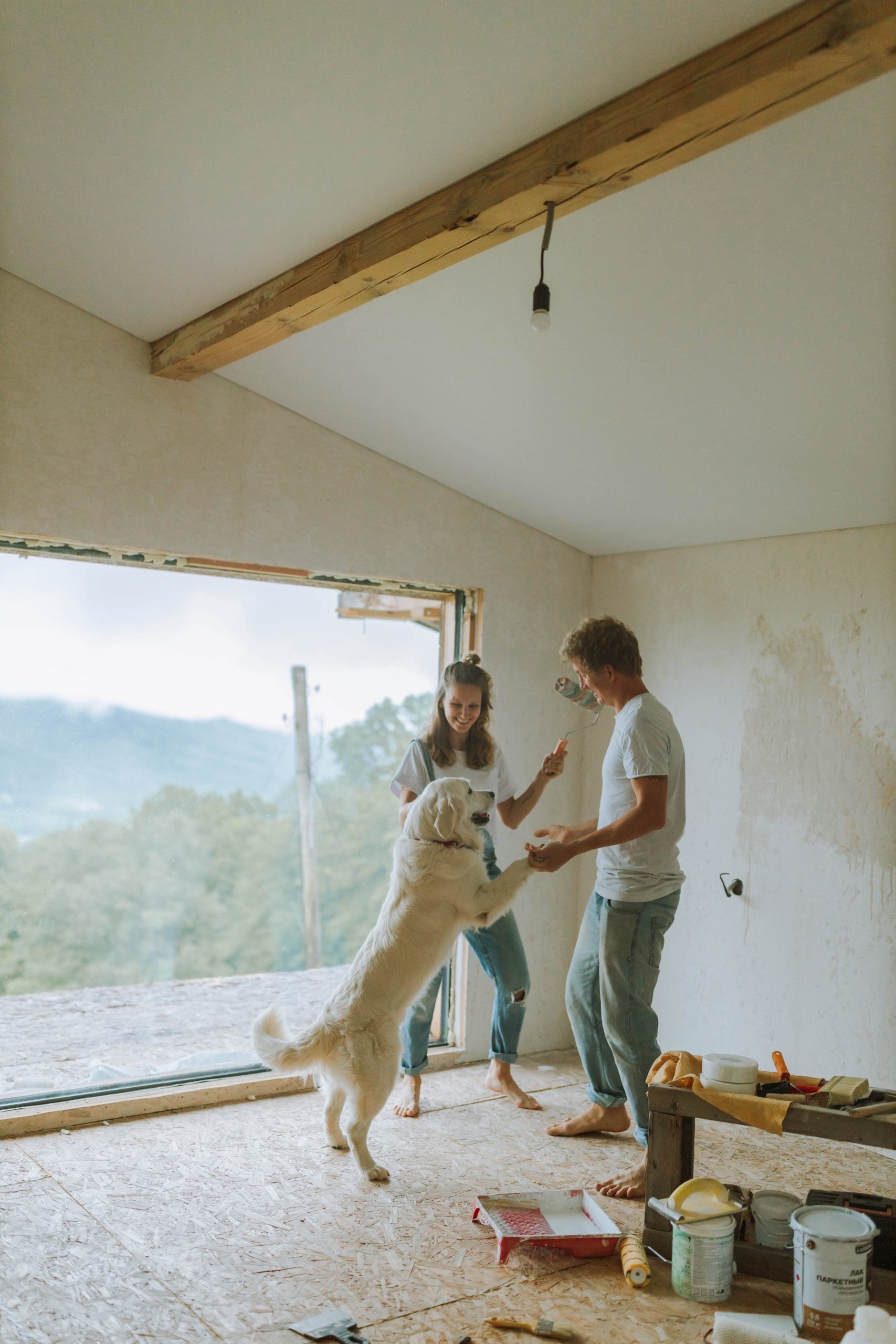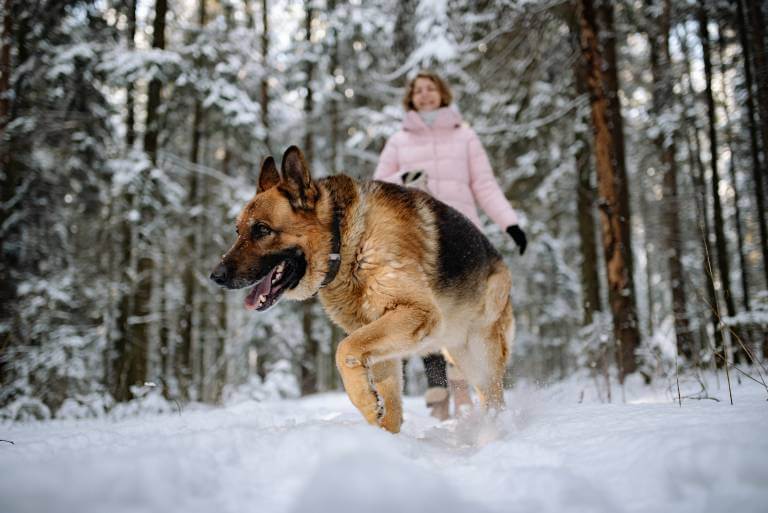How To Teach A Dog To Fetch?
Post Date:
December 10, 2024
(Date Last Modified: November 13, 2025)
Teaching a dog to fetch centers on clear cues, safe equipment, and consistent reinforcement to shape reliable behavior. The steps below cover choosing toys, assessing readiness, teaching core skills, and maintaining safety during play.
Selecting the Right Fetch Toy
Choosing an appropriate toy sets the foundation for safe, effective fetch training. Start by matching toy type and size to your dog’s mouth and play style: balls, frisbees, ropes, and soft toys each suit different breeds and chewing habits.
- Balls — good for chasing and straightforward retrieval.
- Frisbees — suit dogs that enjoy airborne play and have soft mouths.
- Ropes and tug toys — useful for interactive exchanges and teaching release.
- Soft plush toys — appropriate for gentle chewers and calm retrieval practice.
As a sizing guideline, choose a ball about 2 to 3 inches in diameter for small dogs and 3 to 4 inches for larger mouths; convert measurements when needed to check fit (2–3 in = 5–7.6 cm; 3–4 in = 7.6–10 cm). [1]
Pick textures that are gentle on teeth and gums and materials rated for pet use; avoid toys with loose parts, small internal pieces, or degradable stuffing that could become choking hazards. [1]
| Toy type | Best for | Size guideline | Cautions |
|---|---|---|---|
| Rubber ball | Most retrievers and active chasers | 2–4 in (5–10 cm) | Avoid hard, small balls for puppies |
| Frisbee | High-energy jumpers, soft-mouth dogs | Flexible 8–10 in (20–25 cm) | Stop if dog catches awkwardly |
| Rope/tug | Tug-inclined dogs, exchange training | Length varies; comfortable hold | Watch for frayed fibers |
| Soft plush | Calmer dogs, early shaping | Small to medium | Retire if stuffing is chewed out |
Assessing Readiness and Motivation
Age and health affect when and how you teach fetch; modify intensity for puppies, adults, and seniors. For example, avoid repetitive high-impact fetching for puppies under 6 months while growth plates are still developing. [2]
Observe motivation signals: a dog that eagerly paws at a toy or brings it close likely has high toy drive, while one that ignores objects may need lure-based shaping or more enticing rewards. Timing sessions for when the dog is alert but not exhausted yields better engagement; aim for training when your dog is calm and receptive rather than immediately after heavy exercise. [2]
Establishing Basic Obedience Foundations
Before fetch, establish attention, name recognition, and a reliable recall to ensure safety and control during play. Keep early training short and focused; for attention-building and basic cues, plan very brief sessions throughout the day rather than one long session.
Limit specialized fetch-focused training to short bursts: for puppies, keep sessions roughly 5–10 minutes; for adult dogs, 10–15 minutes is often optimal to prevent fatigue and loss of focus. [3]
Teach sit and stay near the start line for controlled releases and use conditioned greetings and name reinforcement so the dog learns that returning to you is part of the routine. [3]
Teaching “Take” and “Hold”
Begin by shaping contact with the toy: reward the dog for touching the object, then for mouthing it, then for picking it up. Clicker or marker training helps mark successive approximations precisely.
Use a lure to prompt pickup and immediately reward the initial lift; reward incremental progress by sequencing touch → pick up → short hold, and only increase hold time gradually. A practical rule is to lengthen hold duration by about 5 seconds per successful repetition as the dog gains confidence. [4]
If the dog chews rather than retrieves, redirect with a different toy and reward the behavior you want instead of scolding—positive reinforcement builds the skill faster. [4]
Teaching “Come” With the Toy
Pair short recalls with the toy so the dog learns returning with a toy is rewarding. Start with very short recalls of 2–3 feet (0.6–0.9 m) and reward immediately to build a strong association between returning and reinforcement. [5]
When needed, use a long line to guide returns and prevent a dog from running off; a line in the range of 20–30 feet (6–9 m) provides room for distance work while maintaining safety. [5]
Reinforce returns by trading up to a tangible reward or an extra play bout so returning becomes the most valuable option for the dog. [5]
Teaching “Drop”/”Give” (Release)
Teach a voluntary release by offering a higher-value treat in exchange for the toy; this establishes a positive trade and reduces possessiveness. Begin with a simple swap: present the treat, say your chosen cue like “drop,” and reward as soon as the dog releases.
Use a consistent verbal cue and systematically fade treats by alternating food rewards with praise and play until the cue alone prompts releases. If a dog shows resource guarding, seek behavior-trainer assistance and avoid forcing the mouth open. [6]
Shaping Fetch Through Play and Rewards
Keep fetch sessions varied and fun to sustain motivation over time. Use a mix of rewards—treats, brief play, and enthusiastic verbal praise—to make returning and releasing the toy consistently rewarding.
End sessions while the dog is still interested so training concludes on a positive note and the dog looks forward to the next play period. Rotate toys and alternate game types to prevent boredom and to generalize retrieval skills across different objects. [6]
Progressing Distance, Duration, and Reliability
Increase distance in gradual steps and proof the behavior in new environments. A conservative approach is to expand the working distance by small increments each session rather than making large jumps that can break the dog’s confidence. [2]
Introduce distractions only after the dog reliably completes short-distance returns and releases; practice on different surfaces and in different contexts to build reliability. If performance regresses, reduce distance or distraction level and rebuild success with shorter, rewarded repetitions. [2]
Troubleshooting Common Problems
If a dog refuses to pick up the toy, try a higher-value object, warm the toy with scent from your hands, or reward mere attention to the toy first before expecting pickup. For dogs that run off with the toy, teach a strong recall away from the toy and practice trading with high-value treats to make returning more attractive than possession. [6]
Calmly manage overexcitement by pausing play when the dog becomes mouthy or overstimulated; only resume once the dog returns to a calmer baseline. For persistent mouthing or escalation into guarding, consult a certified behavior professional for tailored strategies. [6]
Safety, Environment, and Health Considerations
Prioritize safe surfaces—grass or packed dirt is gentler on joints than concrete—and avoid fetch in extreme temperatures. Watch for signs of overheating and stop play if the dog shows heavy panting, collapse, or disorientation. [2]
Inspect toys regularly and retire any with cracks, exposed fibers, or missing parts; damaged toys increase the risk of ingestion and dental injury. Pause fetch if a dog is recovering from dental work, has acute lameness, or shows pain during movement, and consult your veterinarian for clearance before resuming. [1]
When in doubt about your dog’s suitability for a particular intensity of play—such as with young puppies, seniors, or dogs with joint disease—seek veterinary guidance that considers the animal’s medical history and activity tolerance. [1]
Sources
- merckvetmanual.com — Merck Veterinary Manual.
- avma.org — American Veterinary Medical Association.
- aaha.org — American Animal Hospital Association.
- vcahospitals.com — VCA Animal Hospitals.
- wsava.org — World Small Animal Veterinary Association.
- petmd.com — PetMD.






